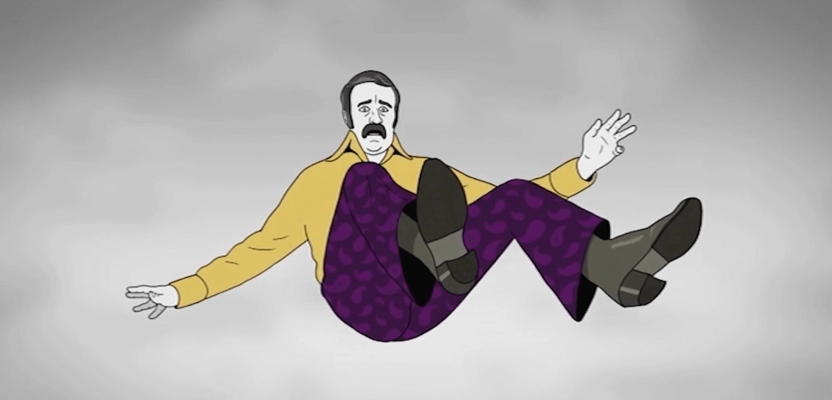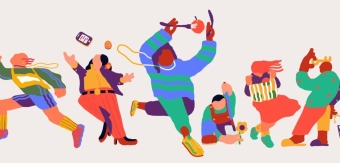Dave Anderson is an animator, illustrator and storyboard artist born in Wales, and currently based in Barcelona, who has for over a decade has been helping even the most uptight organisation find their funny.
In recent years he’s directed Cancer Research UK’s major “Dryathlon” campaign, idents for Jacamo and shorts for Nickelodeon. His music video work has been regularly screened and won awards at film festivals around the world.
We caught up with him to discuss his creative journey so far and where he sees it taking him in the future.
How did you get into the industry?
Mid-2000's, armed with a Fine Art degree, a VHS tape of homemade camcorder sketches, notepad animations and half-baked stand-up comedy footage, I approached every kind of production company and creative agency in London's Yellow Pages.
After a stint moving vans around for the art departments of BBC dramas, I turned down the role of personal driver to Gene Simmons on Rock School when an animation production company offered me the longer term security of becoming one of their runners.
Despite being only a couple of years, it proved to be a very formative period of my life. I learned all aspects of the animation industry (including on one occasion, how to keep a very expensive prawn alive and perky for the period of a shoot for a Korean noodle advert). However, it's the long-lasting friendships I made which I've really got to thank for everything I've achieved in the twenty years since.
Where are you based now and who do you work for?
After stops in East London, my wife’s country of Peru and my hometown in South Wales, the studio is now set up in Barcelona. Never in danger of acquiring a full-time job, I have worked freelance for the past 12 years.
Customers have included the BBC, Channel 4, BT Sport and S4C, where I've made animated bits and pieces for various documentaries and entertainment shows.
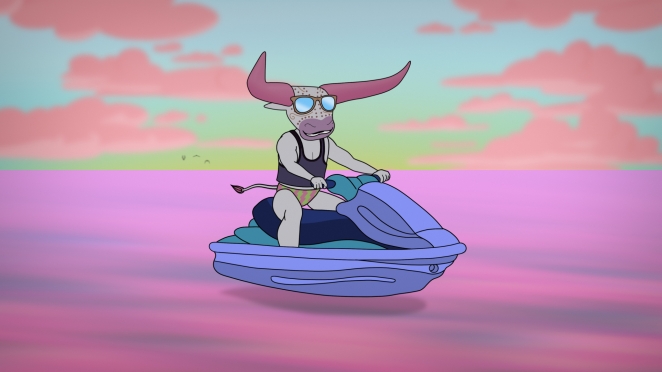
I’m on the books of the London animation production company Hush and the design agency Pocko, with whom I’ve directed national ad campaigns and illustrated for several magazines.
There's a group of film companies and ad agencies who from time to time hire me as a storyboard artist and I’m also the product designer at Pet Hates Toys, a company making satirical chewables for cats and dogs.
If you weren’t in your current industry, what would you be doing?
A tale as old as time itself, leaving school there were a lot of people who, probably quite sensibly, tried to steer me into doing something steadier and more conventional.
I went to do Architecture at university but after three days it became clear it was a massive compromise. Off I went to art school. Possibly in multiple ways a financial error, but anything else would be wearing someone else's clothes. As I always say, if you've got a Plan B, your heart's probably not in Plan A.
But to give you an answer, let's say I'm still driving Gene Simmons around.
Can you explain your creative process? What makes it unique?
What I've taken from the world of stand-up comedy is noting down every interesting or funny thought that pops into my head. Smartphones have made this process much more organised and less peculiar-looking than the beer mats, backs of receipts and empty cigarette packets I used to previously record all my ideas on (and much less of a fire hazard).
Those thoughts are then (brace yourselves) put into a library of nearly 500 different topics I've put together. For instance, ideas on celebrity and chemistry sit either side of jokes about cheese. I'm not sure how useful this process of categorization is but what it does is break down two decades worth of scribbles into more digestible units. I'm fully aware that 95% of these ideas will be garbage and I've learned that ruthless editing is an art in itself.
Having worried about the quality of the writing and the originality of the idea, I then feel free when it comes to making the visual artwork. I've got licence to play around.
How would you describe your style?
I never like to go overboard with goofiness and elasticity in my animation work, preferring more true-to-life, natural comedic gestures. Often just a blink or an awkward pause is the best thing to do.
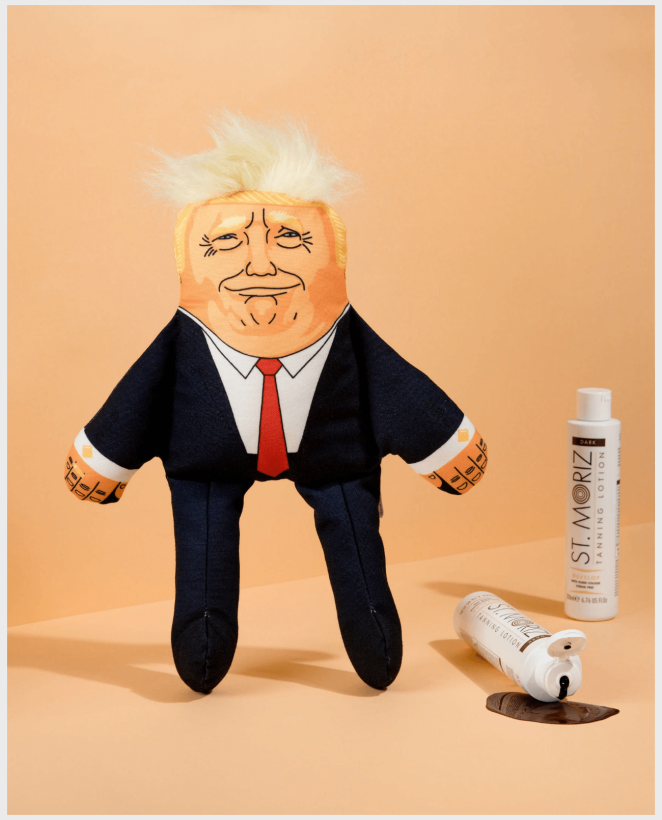
I also enjoy making the individual bits and pieces and then letting them come together in whatever way they will, which can often create unusual quirks and wonks.
Which individuals do you gain inspiration from? Do you have any heroes in the industry?
I’ve been very lucky to have met some brilliant professionals over the years who have given me guidance, support and confidence along the way. London's street art community (despite being more of an “indoorsman” myself) put an arm round me. The artist Will Barras is a great friend and has been something of a mentor to me ever since we met at my first job at the animation company.
Style-wise I've recently been hooked on the animation work of Joe Cappa. The illustrator/animator/musician McBess and Bobby Fingers, a model maker who makes astonishing and hilarious videos on Youtube, are two I regularly go to, mostly as an antidote to laziness.
Working with humour, the name “David Shrigley” has followed me ever since art school. Unfortunately it has raised painful feelings ever since I accidentally walked into the glass front of the art gallery arriving at one of his private views (although another visitor said the imprint of my face left on the glass was, in itself, very “Shrigley-esque”).
What tips would you give to aspiring creatives looking for work?
Years ago, a friend gave me the numbers of some well known newspaper illustrators. Working as a rep for the animation company and having grown accustomed to bothering people on the phone, I called them up. They were surprisingly generous with advice. One bit that stayed with me is, if you're in a hole and not getting much work, keep making stuff. It's the work that'll get you out. I've certainly found that you can pore endlessly over your written CV, when it's what you make that'll get people's attention.

I've been thinking a lot recently about what I read the recent Jimmy Carr book Before and Laughter about branding and selling your specialty, “if you can show people something different, if you can make them do a double take – then they feel like they've never met anyone quite like you before”. He talks about creating a “signal”, rather than general “noise”. In the past, I've definitely tried to please everyone and show how broadly useful I can be. The point I suspect might be not to be scared to really shine a light on your unique selling point.“What’s going to make you stand out on a planet where everyone is clamouring for attention?”
What tips would you give to other professionals to get more clients?
I can give a similar answer here to the advice the news illustrators gave me. Often in quiet times, I try to think about the kind of work I'd love to one day get paid for, and try and make something similar. Loving comedy and storytelling, the work I've made, for free, for various podcasts (a world which at one time was surprisingly accessible... they actually used to email back) has lead onto all sorts of fantastic opportunities.
Artists aren't generally good at selling themselves. It's taken me some time to be bold with basic stuff, like clearly and concisely explaining what it is you can do to help or change things for prospective clients.
The positive thing to remember is there’s more opportunities out there than ever. When I was a college the best thing you could hope for, we were told, was perhaps a commission from The Guardian, if you went round with your portfolio and were lucky enough to get a meeting. Now you can find a kaleidoscope of potential clients on your phone.
What kind of tools/kit/software could you not do without?
Photoshop and After effects are the tools of the trade. The sound is the often underappreciated 50% of any film and Adobe Audition has taken out a lot of the guesswork. Garageband is also good fun, and gives you musical talent you definitely don't have.
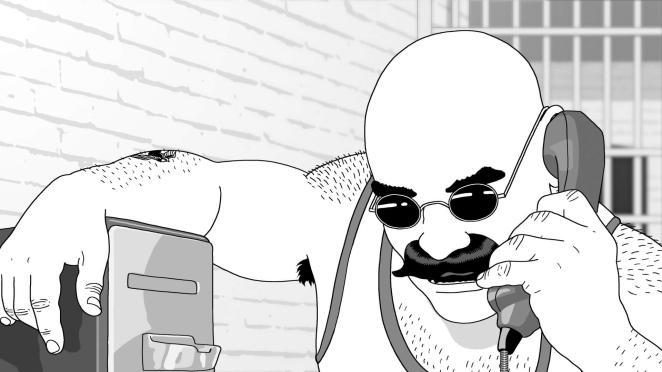
As I mentioned before, Notes on the iPhone has replaced the pile of litter I used to call “my ideas” and also, being quite a solitary job, the company of Spotify Podcasts have helped keep me at the drawing desk.
What’s your secret to staying inspired and motivated?
Basic stuff like exercise, proper sleep and staying social seems like an obvious thing to say, but really does work (and now we have a two year old, please underline “sleep”).
Being freelance of course there’s times when there is not anything going on. It’s very easy then to fall into a pit of “why is no one calling? I'm never going to work again!” In addition to what I've previously said on finding more work, I find having a creative project always on the go, something exciting and distracting to think about, is a good way to stay sane (Especially if you've begun to negatively compare yourself to others. Busy people are happy people).
What’s the work achievement you’re most proud of?
A big coup was when my animation work was talked about on The Joe Rogan Experience, perhaps the world’s biggest podcast. They say an appearance on that show can change your life. The day it happened I was in a Calais motel that smelt of cigarettes waiting for my Peruvian dog's worming medication to take effect so we could cross the channel. But I don't want to brag.
The animated videos I’ve made with the hugely talented musician Tom Rosenthal is something to be very proud of. The collaboration has resulted in something really special and unexpected, much, much more than what could be achieved individually.
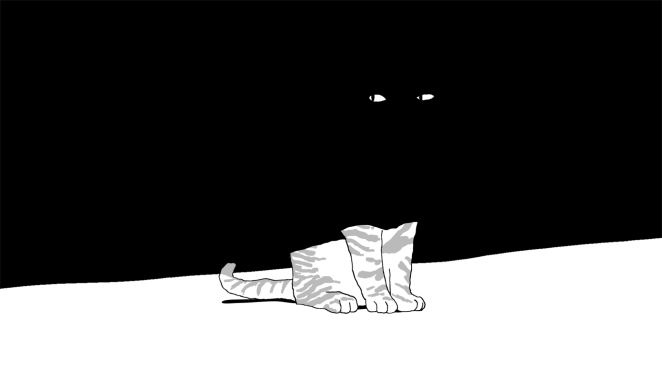
Saying that, my contributions that have made it to print in the revered Letterbocks and Profanisaurus pages of legendary adult comic magazine Viz I want to remain as my eternal legacy.
What is the one thing that you would change about the industry?
Working solo and remotely in various different countries, I’ve always had an eery, “Major Tom” outsider feeling in relationship to “the industry”.
It's a bit disheartening when you come across people higher up in ad agencies who treat humour as a radioactive substance, probably best buried under concrete. And, of course, these days everyone's giving each other the willies about A.I., and has only served to embolden certain clients to ask the question more than ever, “Can’t you just tell the computer to do it?”
But a big moan for me is since everything seems to be set up so frequency and volume of content is more beneficial for business, rather than quality. The incessant flow of slop fired at us all day has sadly become the accepted culture. You could take the time to make something good, but by the time it's uploaded, you’re irrelevant.
Any websites, books or resources you would recommend?
In an ideal world, my Instagram to be an uninterrupted stream of artistic inspiration and I make a real effort to follow unique and interesting creative people. However, it seems my algorithm would rather me see Sportbible non-stories and clips of drunk people falling over and hurting themselves.
As a certified colourblind individual, I’ve never had much confidence picking colour palettes, so websites like Coolors.co are really helpful with suggestions. (I recently found out Terry Gilliam is also colourblind so I no longer feel it’s something I have to keep secret from clients).
I’ve recently been re-constructing my website daveandersonart.com, and some of the advice from Semplice, the portfolio builder I’ve been using, has been really great, not only with the technical stuff but also solid tips on how to select and present your work.
As for joke writing, despite 17th Century English poet John Dryden saying puns are “the lowest and most groveling kind of Wit”, rhymezone.com can really get things moving when you’re stuck.
